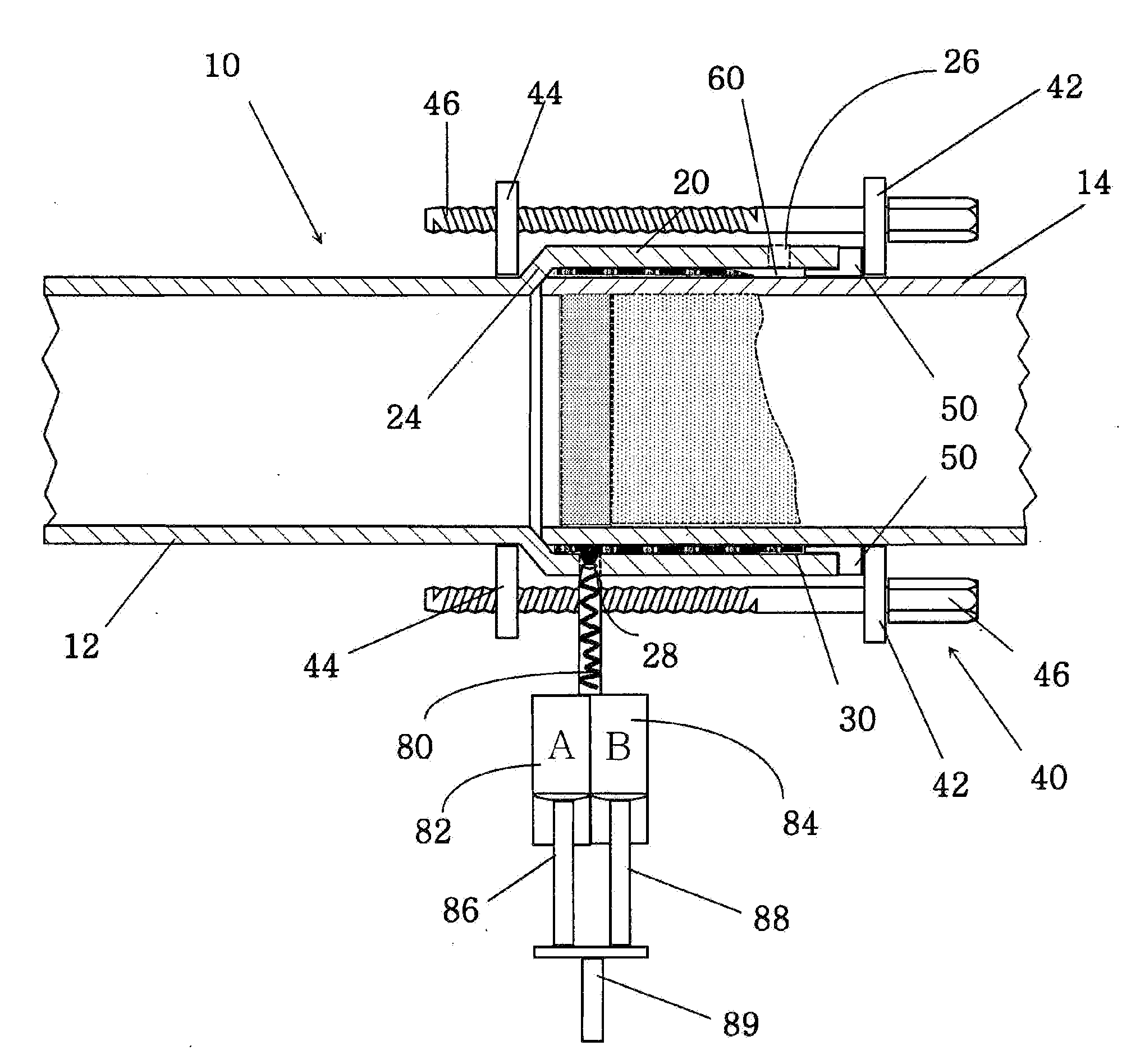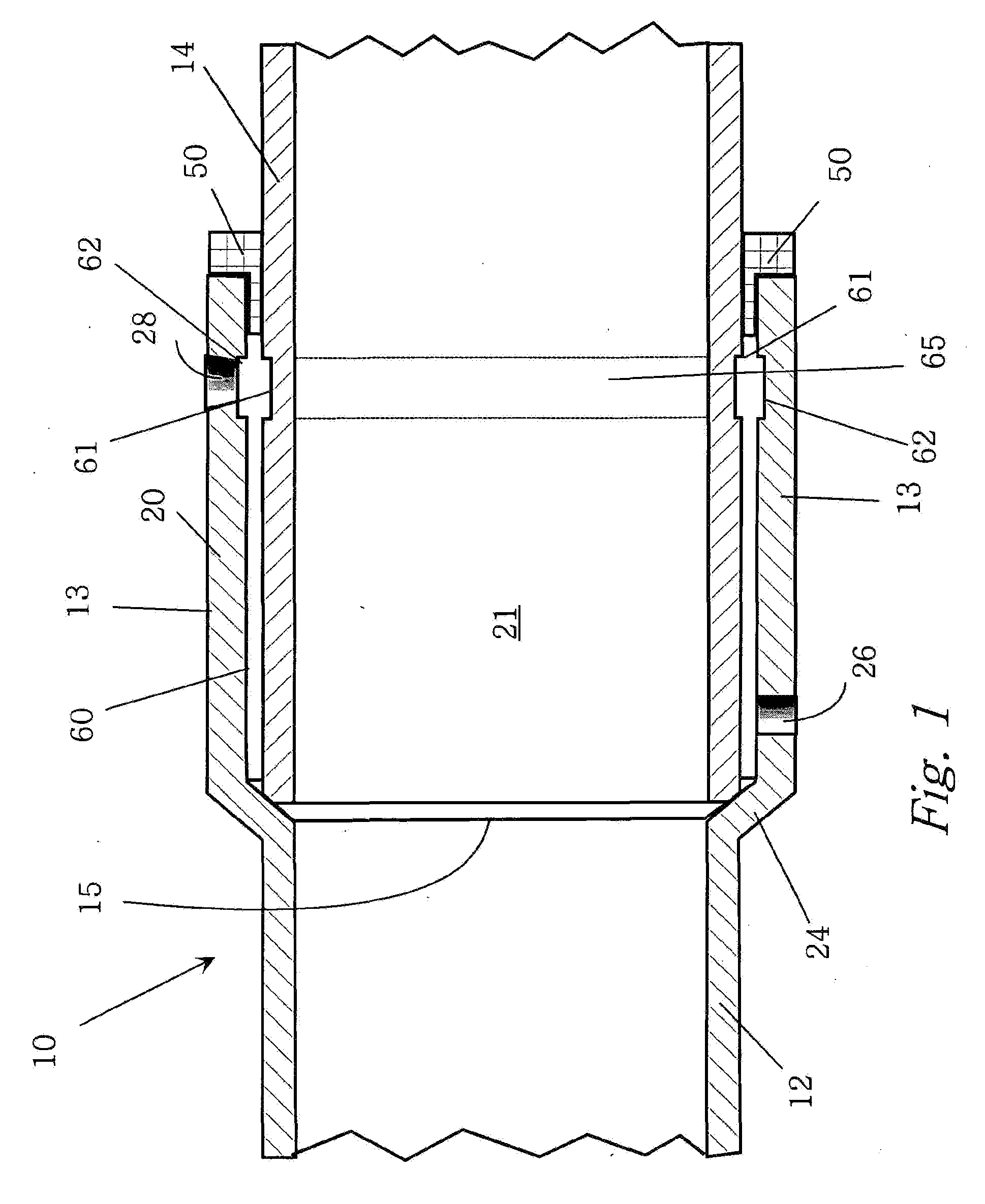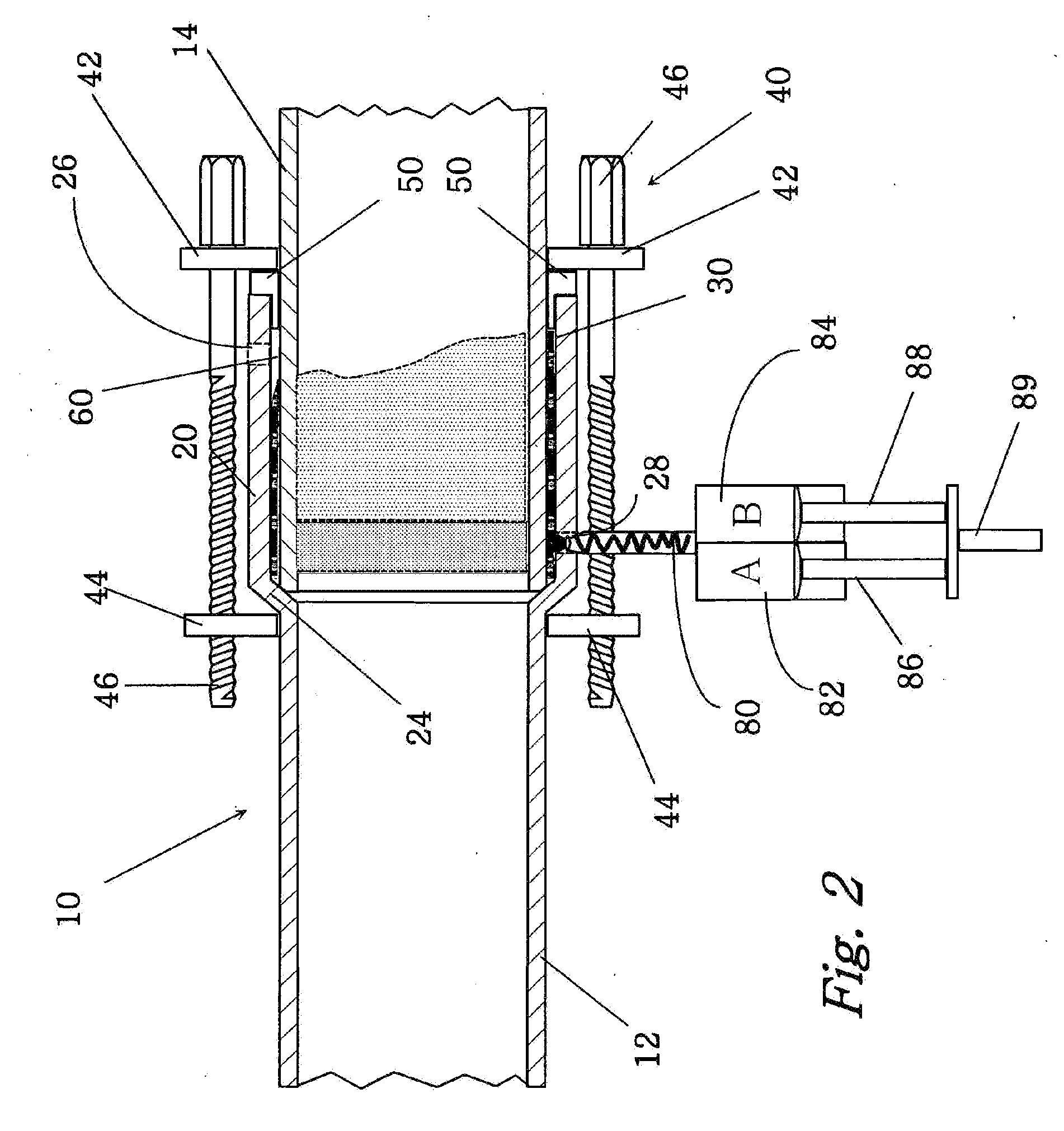Chemical fusion of non-metallic pipe joints
a non-metallic pipe and chemical fusion technology, applied in the direction of mechanical equipment, transportation and packaging, other domestic objects, etc., can solve the problems of difficult joining of non-metallic pipes with adhesives, and achieve the effect of reducing shear stress
- Summary
- Abstract
- Description
- Claims
- Application Information
AI Technical Summary
Benefits of technology
Problems solved by technology
Method used
Image
Examples
Embodiment Construction
[0030]The invention, as illustrated in the drawings is a pipe joint 10. Referring to FIG. 1, the joint 10 has a first pipe 12 having a socket 20 with an inside diameter, where the socket 20 has a mouth 19 (as shown in FIG. 5), a self-centering bottom 25, and a substantially cylindrical wall 13 with an inlet 28, an outlet 26, and an inner annular channel 62 (also shown in ghost in FIG. 3); a second pipe 14 with an insertion section 21 having a squared-off end 15 and an outer annular channel 61, where said second pipe has an outside diameter that is less than the inside diameter of the socket 20, where the difference in diameters defines a gap 60 and where the outer annular channel 61 aligns with the inner annular channel 62 therein forming an interlocking keyway 65. The inner annular channel 62 and the outer annular channel 61 are substantially deformations in the wall of the socket or the insertion section, respectfully, where a portion of the wall is cutaway or molded into the piec...
PUM
| Property | Measurement | Unit |
|---|---|---|
| surface energy | aaaaa | aaaaa |
| surface energy | aaaaa | aaaaa |
| surface energy | aaaaa | aaaaa |
Abstract
Description
Claims
Application Information
 Login to View More
Login to View More - R&D
- Intellectual Property
- Life Sciences
- Materials
- Tech Scout
- Unparalleled Data Quality
- Higher Quality Content
- 60% Fewer Hallucinations
Browse by: Latest US Patents, China's latest patents, Technical Efficacy Thesaurus, Application Domain, Technology Topic, Popular Technical Reports.
© 2025 PatSnap. All rights reserved.Legal|Privacy policy|Modern Slavery Act Transparency Statement|Sitemap|About US| Contact US: help@patsnap.com



